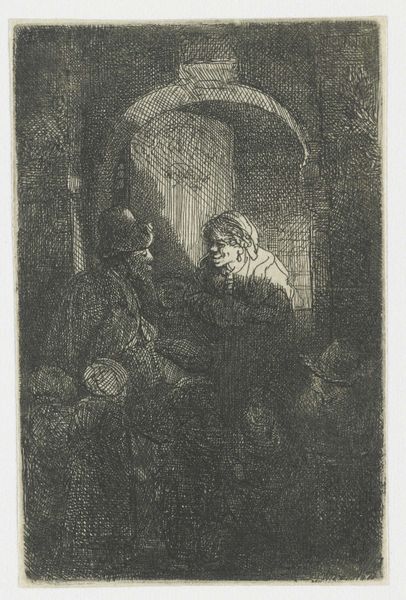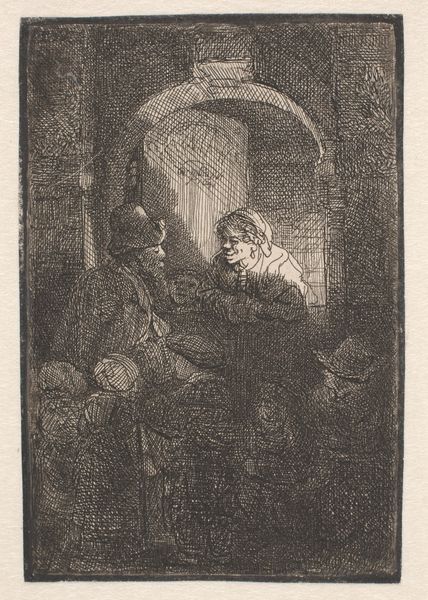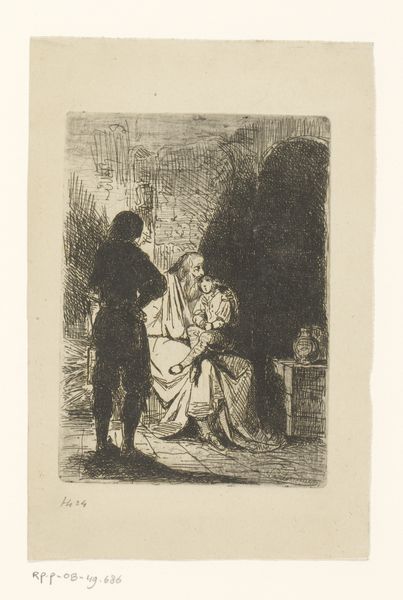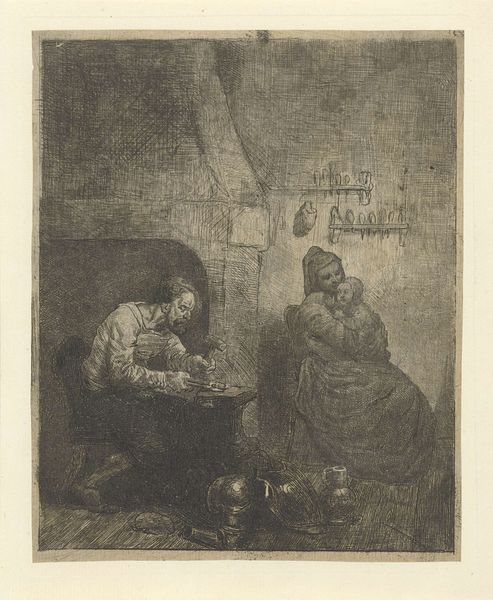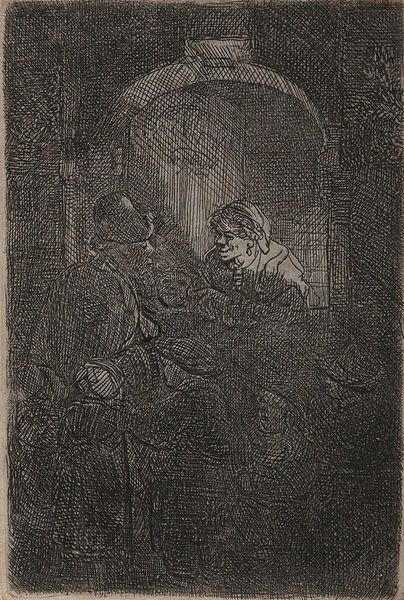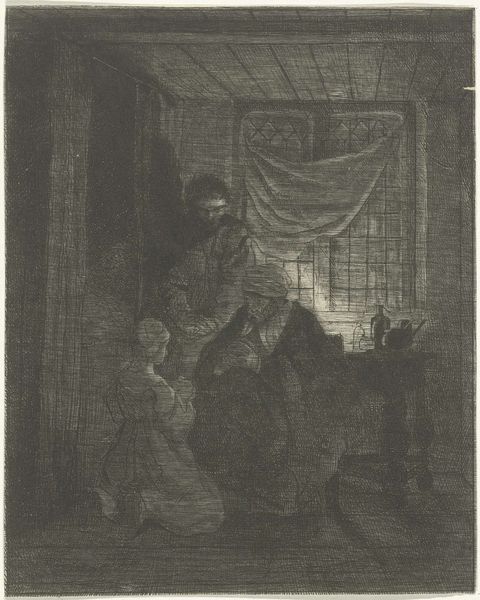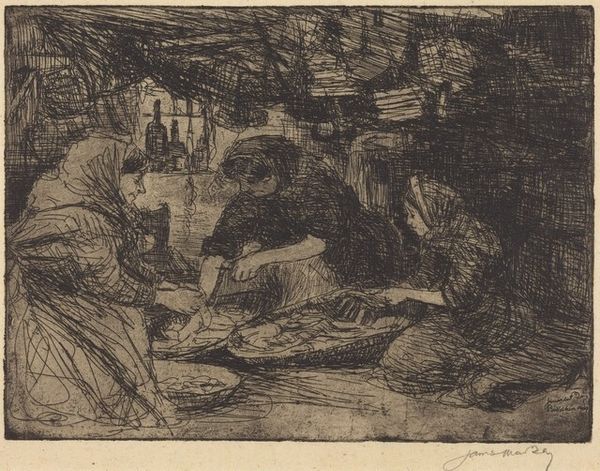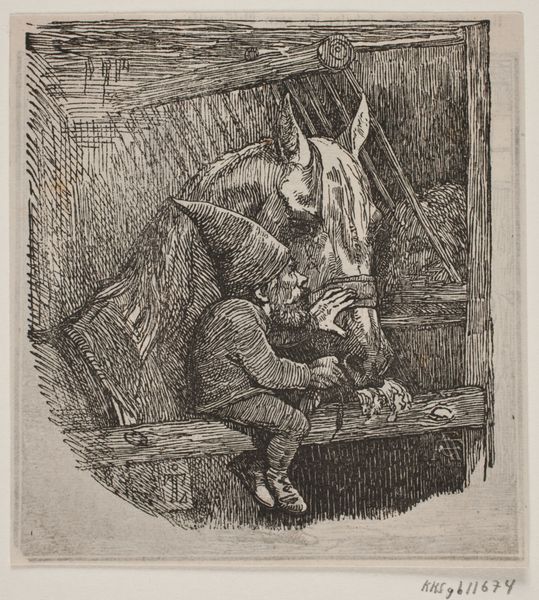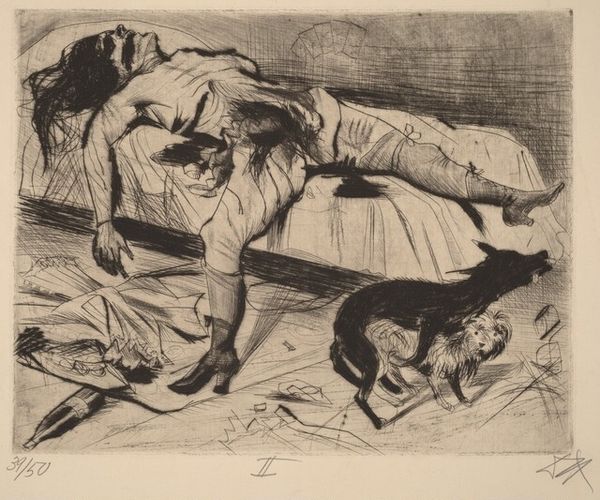
drawing, print, etching, ink
#
portrait
#
drawing
#
new-objectivity
# print
#
etching
#
german-expressionism
#
figuration
#
ink
#
expressionism
#
nude
Dimensions: plate: 19.3 × 13.8 cm (7 5/8 × 5 7/16 in.) sheet: 47.7 × 35.9 cm (18 3/4 × 14 1/8 in.)
Copyright: National Gallery of Art: CC0 1.0
Curator: Otto Dix's 1924 etching, "A Soldier and a Nun," confronts us with a starkly intimate, perhaps unsettling scene. Editor: The first thing that strikes me is the oppressive darkness. It's murky, almost claustrophobic, created by these incredibly dense lines. The tonal range is restricted; it feels intentionally bleak. Curator: The choice of etching is key here. Dix favored this process for its capacity to yield these sharp, almost violent lines, perfectly suited to conveying the emotional intensity he aimed for in portraying the post-war world. We should also observe the themes, exploring not just their relationship to Expressionism, but figuration, portraiture, and, controversially, the nude. Editor: The etching process certainly seems deliberate in emphasizing the tension between the figures and in suggesting a level of abrasion or defilement in the interaction. I wonder about the plate making itself – were these lines achieved with single deep bites of acid or layers and layers of scratching and rebiting? Curator: It's as though he's peeling back layers of societal expectation and exposing something raw and vulnerable, maybe a critique of traditional power dynamics. Consider the long historical and symbolic associations of both the soldier and the nun in Western culture: power, aggression versus piety and self-sacrifice. What does it mean to show them in this light? Editor: Exactly! That contrast of supposed power against the raw state of their bodies really highlights a certain truth about materiality. There's no idealizing, which seems to run contrary to classical art-making traditions where those bodies are polished, immortalized and made distant. Curator: Ultimately, Dix compels us to reconsider established visual languages and question what is normally left unsaid in conventional portraiture, in particular, but in symbolic visualisations of cultural identity more broadly. Editor: Absolutely. He manipulates and foregrounds materiality to expose fault lines between the veneer of civility and the discomforting realities beneath the surface. It makes you rethink how we depict even concepts.
Comments
No comments
Be the first to comment and join the conversation on the ultimate creative platform.
